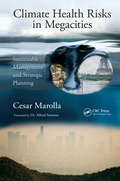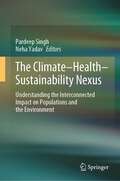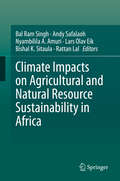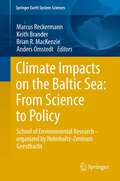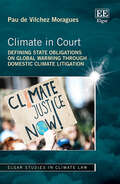- Table View
- List View
Climate Graph - Cool, temperate maritime: Shannon, Ireland (UEB Uncontracted)
This is a graph showing temperature and precipitation over the period of a year in Shannon. There is a locator dot shown, which will be at the top left of the page when the image is the right way up. There are vertical bars indicating average monthly rainfall and a thick dashed line going across the page showing the average monthly temperature. On the left of the page is a vertical scale marked in degrees Centigrade starting from zero at the bottom. It is marked at every five degrees and labelled at every ten degrees. Running right across the page are fine horizontal grid lines. The thick dashed line representing the temperature can be found at the bottom left of the page sloping up and down to right. Across the bottom of the page are twelve labelled vertical bars showing the rainfall for each month of the year, starting with January on the left. To allow sufficient space, the braille labels are uncapitalised. At the far right of the page is a vertical scale of precipitation in millimetres, starting with zero at the bottom. This is marked every 25 mm and labelled every 50 mm.
Climate Graph- Mediterranean: Rome, Italy (Large Print)
This is a graph showing temperature and precipitation over the period of a year in Rome. There is a locator dot shown, which will be at the top left of the page when the image is the right way up. There are vertical bars indicating average monthly rainfall and a thick dashed line going across the page showing the average monthly temperature. On the left of the page is a vertical scale marked in degrees Centigrade starting from zero at the bottom. It is marked at every five degrees and labelled at every ten degrees. Running right across the page are fine horizontal grid lines. The thick dashed line representing the temperature can be found at the bottom left of the page sloping up and down to right. Across the bottom of the page are twelve labelled vertical bars showing the rainfall for each month of the year, starting with January on the left. To allow sufficient space, the braille labels are uncapitalised. At the far right of the page is a vertical scale of precipitation in millimetres, starting with zero at the bottom. This is marked every 25 mm and labelled every 50 mm.
Climate Graph- Mediterranean: Rome, Italy (UEB Contracted)
This is a graph showing temperature and precipitation over the period of a year in Rome. There is a locator dot shown, which will be at the top left of the page when the image is the right way up. There are vertical bars indicating average monthly rainfall and a thick dashed line going across the page showing the average monthly temperature. On the left of the page is a vertical scale marked in degrees Centigrade starting from zero at the bottom. It is marked at every five degrees and labelled at every ten degrees. Running right across the page are fine horizontal grid lines. The thick dashed line representing the temperature can be found at the bottom left of the page sloping up and down to right. Across the bottom of the page are twelve labelled vertical bars showing the rainfall for each month of the year, starting with January on the left. To allow sufficient space, the braille labels are uncapitalised. At the far right of the page is a vertical scale of precipitation in millimetres, starting with zero at the bottom. This is marked every 25 mm and labelled every 50 mm.
Climate Graph- Mediterranean: Rome, Italy (UEB Uncontracted)
This is a graph showing temperature and precipitation over the period of a year in Rome. There is a locator dot shown, which will be at the top left of the page when the image is the right way up. There are vertical bars indicating average monthly rainfall and a thick dashed line going across the page showing the average monthly temperature. On the left of the page is a vertical scale marked in degrees Centigrade starting from zero at the bottom. It is marked at every five degrees and labelled at every ten degrees. Running right across the page are fine horizontal grid lines. The thick dashed line representing the temperature can be found at the bottom left of the page sloping up and down to right. Across the bottom of the page are twelve labelled vertical bars showing the rainfall for each month of the year, starting with January on the left. To allow sufficient space, the braille labels are uncapitalised. At the far right of the page is a vertical scale of precipitation in millimetres, starting with zero at the bottom. This is marked every 25 mm and labelled every 50 mm.
Climate Graph (tactile)
by RnibThis is a bar graph for GCSE level students. Users can follow the graph to track temperature and rainfall levels throughout a year. The axis are all labelled, and users read the graph by means of a plotted line, and textured bars.
Climate Hazards, Disasters, and Gender Ramifications (Routledge Studies in Hazards, Disaster Risk and Climate Change)
by Catarina Kinnvall Helle RydströmThis book focuses on the challenges of living with climate disasters, in addition to the existing gender inequalities that prevail and define social, economic and political conditions. Social inequalities have consequences for the everyday lives of women and girls where power relations, institutional and socio-cultural practices make them disadvantaged in terms of disaster preparedness and experience. Chapters in this book unravel how gender and masculinity intersect with age, ethnicity, sexuality and class in specific contexts around the globe. It looks at the various kinds of difficulties for particular groups before, during and after disastrous events such as typhoons, flooding, landslides and earthquakes. It explores how issues of gender hierarchies, patriarchal structures and masculinity are closely related to gender segregation, institutional codes of behaviour and to a denial of environmental crisis. This book stresses the need for a gender-responsive framework that can provide a more holistic understanding of disasters and climate change. A critical feminist perspective uncovers the gendered politics of disaster and climate change. This book will be useful for practitioners and researchers working within the areas of Climate Change response, Gender Studies, Disaster Studies and International Relations.
Climate Hazards, Disasters, and Gender Ramifications (Routledge Studies in Hazards, Disaster Risk and Climate Change)
by Catarina Kinnvall Helle RydströmThis book focuses on the challenges of living with climate disasters, in addition to the existing gender inequalities that prevail and define social, economic and political conditions. Social inequalities have consequences for the everyday lives of women and girls where power relations, institutional and socio-cultural practices make them disadvantaged in terms of disaster preparedness and experience. Chapters in this book unravel how gender and masculinity intersect with age, ethnicity, sexuality and class in specific contexts around the globe. It looks at the various kinds of difficulties for particular groups before, during and after disastrous events such as typhoons, flooding, landslides and earthquakes. It explores how issues of gender hierarchies, patriarchal structures and masculinity are closely related to gender segregation, institutional codes of behaviour and to a denial of environmental crisis. This book stresses the need for a gender-responsive framework that can provide a more holistic understanding of disasters and climate change. A critical feminist perspective uncovers the gendered politics of disaster and climate change. This book will be useful for practitioners and researchers working within the areas of Climate Change response, Gender Studies, Disaster Studies and International Relations.
Climate Health Risks in Megacities: Sustainable Management and Strategic Planning
by Cesar MarollaClimate Health Risks in Megacities: Sustainable Management and Strategic Planning courageously confronts the immense challenges of alleviating climate change and takes the initiative to layout an agenda that calls for action in the rapidly changing landscape of our global climate. This guide provides a constructive methodology for developing and implementing risk management and operational continuity management systems to climate change effects on urban populations. It addresses key issues such as physical location, proper sanitation, food security and vector-borne diseases against the backdrop of climate change, and then model its effect on the urban dwellers. The author also reveals the benefits of implementing a unique risk management approach to combat global threats and focuses on building urban resilience in the face of disasters. Prepared with a comprehensive and forward-thinking style, this book draws on indispensable case studies in key megacities like New York, Los Angeles, Beijing, Rio de Janeiro, London, Mumbai, and Lagos, and links researchers, scientists, city’s mayors, environmentalists, policy-makers and world leaders from central areas to review, reflect, and expound on future directions.
Climate Health Risks in Megacities: Sustainable Management and Strategic Planning
by Cesar MarollaClimate Health Risks in Megacities: Sustainable Management and Strategic Planning courageously confronts the immense challenges of alleviating climate change and takes the initiative to layout an agenda that calls for action in the rapidly changing landscape of our global climate. This guide provides a constructive methodology for developing and implementing risk management and operational continuity management systems to climate change effects on urban populations. It addresses key issues such as physical location, proper sanitation, food security and vector-borne diseases against the backdrop of climate change, and then model its effect on the urban dwellers. The author also reveals the benefits of implementing a unique risk management approach to combat global threats and focuses on building urban resilience in the face of disasters. Prepared with a comprehensive and forward-thinking style, this book draws on indispensable case studies in key megacities like New York, Los Angeles, Beijing, Rio de Janeiro, London, Mumbai, and Lagos, and links researchers, scientists, city’s mayors, environmentalists, policy-makers and world leaders from central areas to review, reflect, and expound on future directions.
The Climate-Health-Sustainability Nexus: Understanding the Interconnected Impact on Populations and the Environment
by Neha Yadav Pardeep SinghIn a compelling scholarly journey, this book unfolds the intricate narratives of human progress and its environmental repercussions catalyzed by the Industrial Revolution. It thoughtfully contrasts the exploitative environmental ideologies stemming from colonization and industrialization against the profound yet often marginalized indigenous ecological philosophies, urging a pivotal shift in environmental stewardship. The narrative meticulously traces the arc of scientific discovery and environmental policy evolution, from Eunice Foote’s groundbreaking hypothesis on the greenhouse effect to the landmark achievements of the Paris Agreement, encapsulating over a century of environmental activism and scholarly debate. The discourse extends beyond traditional environmental concerns, exploring the intersection of climate change with public health, food security, and gender disparities, underscoring the urgency of sustainable agricultural practices and the pivotal role of women in food systems. It introduces the transformative potential of digital health innovations and renewable energy technologies as crucial tools in climate mitigation, highlighting the need for an integrated socio-technical governance model that includes community resilience and biopsychosocial health. The book critically addresses the dynamics of climate finance, advocating for inclusive green growth through strategic renewable energy investments, and revisits the ‘Tragedy of the Commons’ to challenge conventional views on communal resource management. It advocates for a justice-oriented approach to tackling the multifaceted environmental, social, and economic challenges, with a particular lens on the adverse impacts borne by marginalized communities in the Global South. Furthermore, it explores the untapped potential of wild genetic resources in bolstering food security. It aligns with the United Nations’ Sustainable Development Goals, advocating for integrating Indigenous wisdom into urban development strategies. This book is a call to action, serving as a comprehensive scholarly examination that addresses the multifaceted challenges of climate change, health, and sustainability and champions a collective approach towards forging a sustainable and equitable future.
Climate, History and the Modern World
by Hubert H. LambWe live in a world that is increasingly vulnerable to climatic shocks - affecting agriculture and industry, government and international trade, not to mention human health and happiness. Serious anxieties have been aroused by respected scientists warning of dire perils that could result from upsets of the climatic regime. In this internationally acclaimed book, Emeritus Professor Hubert Lamb examines what we know about climate, how the past record of climate can be reconstructed, the causes of climatic variation, and its impact on human affairs now and in the historical and prehistoric past. This 2nd Edition includes a new preface and postscript reviewing the wealth of literature to emerge in recent years, and discusses implications for a deeper understanding of the problems of future climatic fluctuations and forecasting.
Climate, History and the Modern World
by Hubert H. LambWe live in a world that is increasingly vulnerable to climatic shocks - affecting agriculture and industry, government and international trade, not to mention human health and happiness. Serious anxieties have been aroused by respected scientists warning of dire perils that could result from upsets of the climatic regime. In this internationally acclaimed book, Emeritus Professor Hubert Lamb examines what we know about climate, how the past record of climate can be reconstructed, the causes of climatic variation, and its impact on human affairs now and in the historical and prehistoric past. This 2nd Edition includes a new preface and postscript reviewing the wealth of literature to emerge in recent years, and discusses implications for a deeper understanding of the problems of future climatic fluctuations and forecasting.
Climate Impacts on Agricultural and Natural Resource Sustainability in Africa
by Bal Ram Singh Andy Safalaoh Nyambilila A. Amuri Lars Olav Eik Bishal K. Sitaula Rattan LalThis book discusses knowledge-based sustainable agro-ecological and natural resource management systems and best practices for sustained agricultural productivity and ecosystem resilience for better livelihoods under a changing climate. With a focus on agriculture in Africa, the book assesses innovative technologies for use on smallholder farms, and addresses some of the key Sustainable Development Goals to guide innovative responses and enhanced adaptation methods for coping with climate change.Contributions are based on 'Capacity Building for Managing Climate Change in Malawi' (CABMACC), a five-year program with an overall goal to improve livelihoods and food security through innovative responses and enhanced capacity of adaptation to climate change. Readers will discover more about sustainable crop production, climate smart agriculture, on-farm energy supply from biogas and the potential of soil carbon sequestration in crop-livestock systems.
Climate Impacts on the Baltic Sea: School of Environmental Research - Organized by the Helmholtz-Zentrum Geesthacht (Springer Earth System Sciences)
by Marcus ReckermannThe Baltic Sea area is an old cultural landscape with a well developed international framework for monitoring, assessing and managing its marine ecosystems. It provides a good case study for other regions where such management is being set up. The chapters in this book are based on lectures given at a summer school on the Baltic Sea island of Bornholm in the summer of 2009. They cover a range of topics, spanning from detailed descriptions of political agreements that protect the marine environment, to basic modelling instructions, to an assessment of the possible impacts of climate change on the marine ecosystem, to a reflection on the role of climate scientists and their responsibility in society. This interdisciplinary book is primarily directed at students and lecturers of the environmental disciplines to provide an overview of the possible impacts of climate change on the Baltic Sea. It is also intended to serve as a background reference for scientists and policy makers, both for the Baltic Sea area and more generally. The book is a contribution to the BALTEX programme and to the BONUS+ projects ECOSUPPORT and Baltic-C.
Climate Impacts on Water Resources in India: Environment and Health (Water Science and Technology Library #95)
by Ashish Pandey S. K. Mishra M. L. Kansal R. D. Singh V. P. SinghThis book chiefly focuses on environmental flow, water pollution and water quality. Several chapters also cover water treatment technologies and management. In today’s context, climate change and climate variability are important issues in the water sector, which is called upon to develop adaptation strategies to cope with their negative impacts. Human health depends upon the quality of water used for drinking and irrigation purposes. These core issues are discussed and addressed in several chapters. The book explores the impact of climate change on water resources and considers various climatological scenarios. In this regard, it carries out a trend analysis and compares the performance of various Global Climate Models (GCMs). Further, it conducts a water quality analysis and water quality mapping so as to provide information on the most vulnerable areas in the context of water quality. Emerging pollutants, generated from paper mills, are identified in order to choose an appropriate treatment technology. Bioremediation techniques are included for the characterization of improved water quality parameters. The book also presents a low-cost treatment technology for fluoride removal, which can help water managers ensure potable water to stakeholders. In terms of maintaining river ecology in the downstream areas of water resources project sites, the book provides a number of case studies on assessment of environmental flows. Advanced treatment technologies that can be highly advantageous for removing water pollutants are presented. Given its scope, the book offers a valuable resource for academics, water resources practitioners, scientists, water managers, environmentalists, administrators, NGOs, researchers and students who are involved in water management with a main focus on water pollution, the environment, climate change and health.
Climate in Asia and the Pacific: Security, Society and Sustainability (Advances in Global Change Research #56)
by Michael Manton Linda Anne StevensonCommissioned by the Intergovernmental Meeting (IGM) of the Asia-Pacific Network for Global Change Research (APN), this book offers a detailed survey of the current status of climate change and climate variability in the Asia-Pacific region, a thorough and thoughtful assessment of climate and security and clear recommendations on the best paths of climate research in the future.
Climate in Context: Science and Society Partnering for Adaptation (Wiley Works)
by Adam Parris Gregg GarfinSociety is increasingly affected by climate impacts, from prolonged water shortages to damaging coastal floods and wildfires. Scientists studying climate variations are eager to have their knowledge used in adaptive decision making. To achieve this, science and society must engage productively around complex management and policy challenges. For over 20 years, the science-society interface has been fertile ground for the Regional Integrated Sciences and Assessments (RISA) programs sponsored by the U.S. National Oceanic and Atmospheric Administration. Climate in Context describes what it takes to help scientists and stakeholders work together to “co-produce” climate science knowledge, policy, and action. This state-of-the art synthesis reflects on lessons learned by RISA programs, and provides a sober assessment of the challenges ahead. Through case studies from various US regions, this book provides lessons and guidance for organizations and individuals who want to work at the science-society interface on a range of climate challenges.
Climate in Context: Science and Society Partnering for Adaptation (Wiley Works)
by Adam S Parris Gregg M Garfin Kirstin Dow Ryan Meyer Sarah L CloseSociety is increasingly affected by climate impacts, from prolonged water shortages to damaging coastal floods and wildfires. Scientists studying climate variations are eager to have their knowledge used in adaptive decision making. To achieve this, science and society must engage productively around complex management and policy challenges. For over 20 years, the science-society interface has been fertile ground for the Regional Integrated Sciences and Assessments (RISA) programs sponsored by the U.S. National Oceanic and Atmospheric Administration. Climate in Context describes what it takes to help scientists and stakeholders work together to “co-produce” climate science knowledge, policy, and action. This state-of-the art synthesis reflects on lessons learned by RISA programs, and provides a sober assessment of the challenges ahead. Through case studies from various US regions, this book provides lessons and guidance for organizations and individuals who want to work at the science-society interface on a range of climate challenges.
Climate in Court: Defining State Obligations on Global Warming Through Domestic Climate Litigation (Elgar Studies in Climate Law)
by Pau de Vilchez MoraguesAnswering the key question of whether there is an obligation for States to define and enact sound climate policies in order to avoid the impacts of global warming, this timely book provides expert analysis on recent global climate cases, assessing not only the plaintiffs’ claims but also the legal reasoning put forward by the courts. As an increasing number of environmental organisations are requiring domestic courts to answer this fundamental question, this book illustrates that more and more court decisions are confirming that the discretion held by States with regards to the issue of climate change is not unlimited. The book explores how States must also demonstrate that sufficient action is being taken to protect their citizens from risks. With in-depth assessments of common legal grounds, such as the international climate change regime, environmental law principles and human rights, it further highlights potential issues for climate litigation including the separation of powers and the standing of the plaintiffs themselves. Addressing current and emerging issues, this timely book will be an excellent resource for scholars of environmental law, climate change and human rights. Environmental activists and organisations looking for examples of initiatives to tackle issues such as environmental protection and justice will find this informative and insightful.
The Climate in Historical Times: Towards a Synthesis of Holocene Proxy Data and Climate Models (GKSS School of Environmental Research)
by Hubertus Fischer Thomas Kumke Gerrit Lohmann Heinrich Miller Jörg NegendankThis book reports on efforts by geoscientists and climate modellers (KIHZ) to assess natural climate variability during the Holocene. Part 1 is an overview of the climate system and its dynamics. Part 2 describes the efforts of the KIHZ members to reconstruct past climate by using proxy data derived from ice cores, lake sediments, tree rings and corals, statistical analyses and climate models.
Climate in Human Perspective: A tribute to Helmut E. Landsberg (Atmospheric and Oceanographic Sciences Library #15)
by J. M. Mitchell N. L. Canfield F. BaerThe editors intend that this book conveys the remarkable variety and fundamental importance of the late Helmut E. Landsberg's many contributions to the science of climatology and its practice over a very productive 55-year career. We thank the distinguished authors for their contributions. We also thank Corinne Preston and Charlene Mann for their invaluable word-processing assistance and preparation of camera-ready copy. Finally, we thank Joshua Holland for permission to reproduce his portrait of Landsberg, and Jeanne Moody for preparation of the index. F. Baer N. L. Canfield J. M. Mitchell Editors vii CONTRmUTORS Ferdinand Baer, Department of Meteorology, University of Maryland, College Park, Maryland, USA Norman L. Canfield, Department of Meteorology, University of Maryland, College Park, Maryland, USA Dennis M. Driscoll, Department of Meteorology, Texas A & M University, College Station, Texas, USA William H. Haggard, Climatological Consulting Corporation, Asheville, North Carolina, USA David M. Ludlum, Founding Editor, Weatherwise, Princeton, New Jersey, USA Thomas F. Malone, St. Joseph College, West Hartford, Connecticut, USA J. Murray Mitchell, National Oceanic and Atmospheric Administration (retired), McLean, Virginia, USA Timothy R. Oke, Department of Geography, University of British Columbia, Vancouver, British Columbia, Canada Joseph Smagorinsky, National Oceanic and Atmospheric Administration (retired), Princeton, New Jersey, USA Hessam Taba, World Meteorological Organization (retired), Geneva, Switzerland Morley Thomas, Atmospheric Environment Service (retired), Downsview, Ontario, Canada. IX OVERVIEW Ferdinand Baer Helmut E.
Climate in Motion: Science, Empire, and the Problem of Scale
by Deborah R. CoenToday, predicting the impact of human activities on the earth’s climate hinges on tracking interactions among phenomena of radically different dimensions, from the molecular to the planetary. Climate in Motion shows that this multiscalar, multicausal framework emerged well before computers and satellites. Extending the history of modern climate science back into the nineteenth century, Deborah R. Coen uncovers its roots in the politics of empire-building in central and eastern Europe. She argues that essential elements of the modern understanding of climate arose as a means of thinking across scales in a state—the multinational Habsburg Monarchy, a patchwork of medieval kingdoms and modern laws—where such thinking was a political imperative. Led by Julius Hann in Vienna, Habsburg scientists were the first to investigate precisely how local winds and storms might be related to the general circulation of the earth’s atmosphere as a whole. Linking Habsburg climatology to the political and artistic experiments of late imperial Austria, Coen grounds the seemingly esoteric science of the atmosphere in the everyday experiences of an earlier era of globalization. Climate in Motion presents the history of modern climate science as a history of “scaling”—that is, the embodied work of moving between different frameworks for measuring the world. In this way, it offers a critical historical perspective on the concepts of scale that structure thinking about the climate crisis today and the range of possibilities for responding to it.
Climate in Motion: Science, Empire, and the Problem of Scale
by Deborah R. CoenToday, predicting the impact of human activities on the earth’s climate hinges on tracking interactions among phenomena of radically different dimensions, from the molecular to the planetary. Climate in Motion shows that this multiscalar, multicausal framework emerged well before computers and satellites. Extending the history of modern climate science back into the nineteenth century, Deborah R. Coen uncovers its roots in the politics of empire-building in central and eastern Europe. She argues that essential elements of the modern understanding of climate arose as a means of thinking across scales in a state—the multinational Habsburg Monarchy, a patchwork of medieval kingdoms and modern laws—where such thinking was a political imperative. Led by Julius Hann in Vienna, Habsburg scientists were the first to investigate precisely how local winds and storms might be related to the general circulation of the earth’s atmosphere as a whole. Linking Habsburg climatology to the political and artistic experiments of late imperial Austria, Coen grounds the seemingly esoteric science of the atmosphere in the everyday experiences of an earlier era of globalization. Climate in Motion presents the history of modern climate science as a history of “scaling”—that is, the embodied work of moving between different frameworks for measuring the world. In this way, it offers a critical historical perspective on the concepts of scale that structure thinking about the climate crisis today and the range of possibilities for responding to it.
Climate in Motion: Science, Empire, and the Problem of Scale
by Deborah R. CoenToday, predicting the impact of human activities on the earth’s climate hinges on tracking interactions among phenomena of radically different dimensions, from the molecular to the planetary. Climate in Motion shows that this multiscalar, multicausal framework emerged well before computers and satellites. Extending the history of modern climate science back into the nineteenth century, Deborah R. Coen uncovers its roots in the politics of empire-building in central and eastern Europe. She argues that essential elements of the modern understanding of climate arose as a means of thinking across scales in a state—the multinational Habsburg Monarchy, a patchwork of medieval kingdoms and modern laws—where such thinking was a political imperative. Led by Julius Hann in Vienna, Habsburg scientists were the first to investigate precisely how local winds and storms might be related to the general circulation of the earth’s atmosphere as a whole. Linking Habsburg climatology to the political and artistic experiments of late imperial Austria, Coen grounds the seemingly esoteric science of the atmosphere in the everyday experiences of an earlier era of globalization. Climate in Motion presents the history of modern climate science as a history of “scaling”—that is, the embodied work of moving between different frameworks for measuring the world. In this way, it offers a critical historical perspective on the concepts of scale that structure thinking about the climate crisis today and the range of possibilities for responding to it.
Climate in Motion: Science, Empire, and the Problem of Scale
by Deborah R. CoenToday, predicting the impact of human activities on the earth’s climate hinges on tracking interactions among phenomena of radically different dimensions, from the molecular to the planetary. Climate in Motion shows that this multiscalar, multicausal framework emerged well before computers and satellites. Extending the history of modern climate science back into the nineteenth century, Deborah R. Coen uncovers its roots in the politics of empire-building in central and eastern Europe. She argues that essential elements of the modern understanding of climate arose as a means of thinking across scales in a state—the multinational Habsburg Monarchy, a patchwork of medieval kingdoms and modern laws—where such thinking was a political imperative. Led by Julius Hann in Vienna, Habsburg scientists were the first to investigate precisely how local winds and storms might be related to the general circulation of the earth’s atmosphere as a whole. Linking Habsburg climatology to the political and artistic experiments of late imperial Austria, Coen grounds the seemingly esoteric science of the atmosphere in the everyday experiences of an earlier era of globalization. Climate in Motion presents the history of modern climate science as a history of “scaling”—that is, the embodied work of moving between different frameworks for measuring the world. In this way, it offers a critical historical perspective on the concepts of scale that structure thinking about the climate crisis today and the range of possibilities for responding to it.


